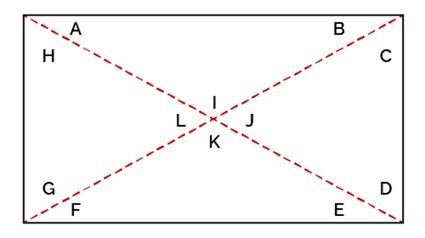Rectangle Diagonal Angle Calculator
Our rectangle diagonal angle calculator is a great tool to help you to calculate the angles created when we draw diagonal lines through a rectangle. Whether you are studying geometry or just doing research for a project, we have what you need. Here we will discuss:
- What is the meaning of the diagonal of a rectangle.
- How many diagonals does a rectangle have?
- The formulas used by our rectangle diagonal angle calculator.
- Some mathematical facts related to finding the diagonals of a rectangle.
What do we mean by diagonal of a rectangle?
A diagonal of a rectangle is a straight line drawn through a rectangle that connects the vertices that are not adjacent. Each rectangle has two diagonals. The diagonals of a rectangle bisect each other.
What is the formula used by our rectangle diagonal angle calculator?
Now that you understand what diagonals mean, here are a few facts that will help us to find the diagonal angles of a rectangle:
- When we draw two diagonal lines through a rectangle, they form two pairs of congruent angles at their point of intersection.
- The congruent angles are the ones opposite to each other. The angles opposite the intersection are also duplicates of each other.
- The vertices of a rectangle form angles of
90°. - Linear angles, e.g.,
IandJin the diagram, add up to180°. - The interior angles of a triangle also add up to
180°.
These bits of information are crucial to finding the angles formed by the diagonals when we know the values of one side. Discovering the others is pretty simple if you know any other interior angles. Our rectangle diagonal angle calculator uses the following formulas to find the angles formed by the diagonals:
180° = A + B + IA = B = F = E90° = A + HI = KL = JH = G = C = D
So if we are given A = 46° then B, F and E will also be equal to 46°
Since A + B + I = 180°:
I = 180° - (A+B) = 180° - (46° + 46°)
I = 180° - 92°
I = 88°
So K is also 88°.
Because we know that A + H = 90° and A = 46° then:
H = 90° - 46° = 37°
Therefore G, C and D = 37°.
Given I + J = 180°:
J = 180° - 88° = 92°
And since J = L:
L = 92°
